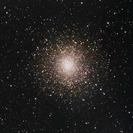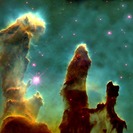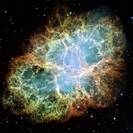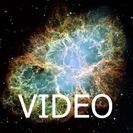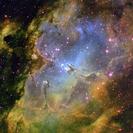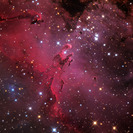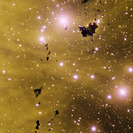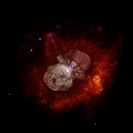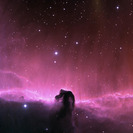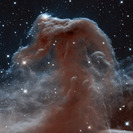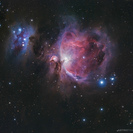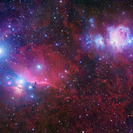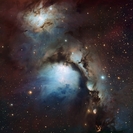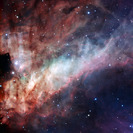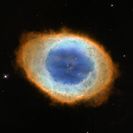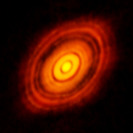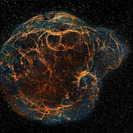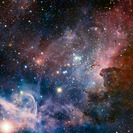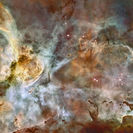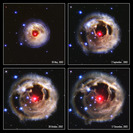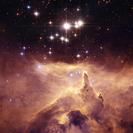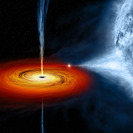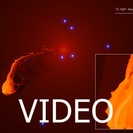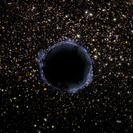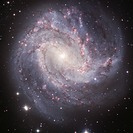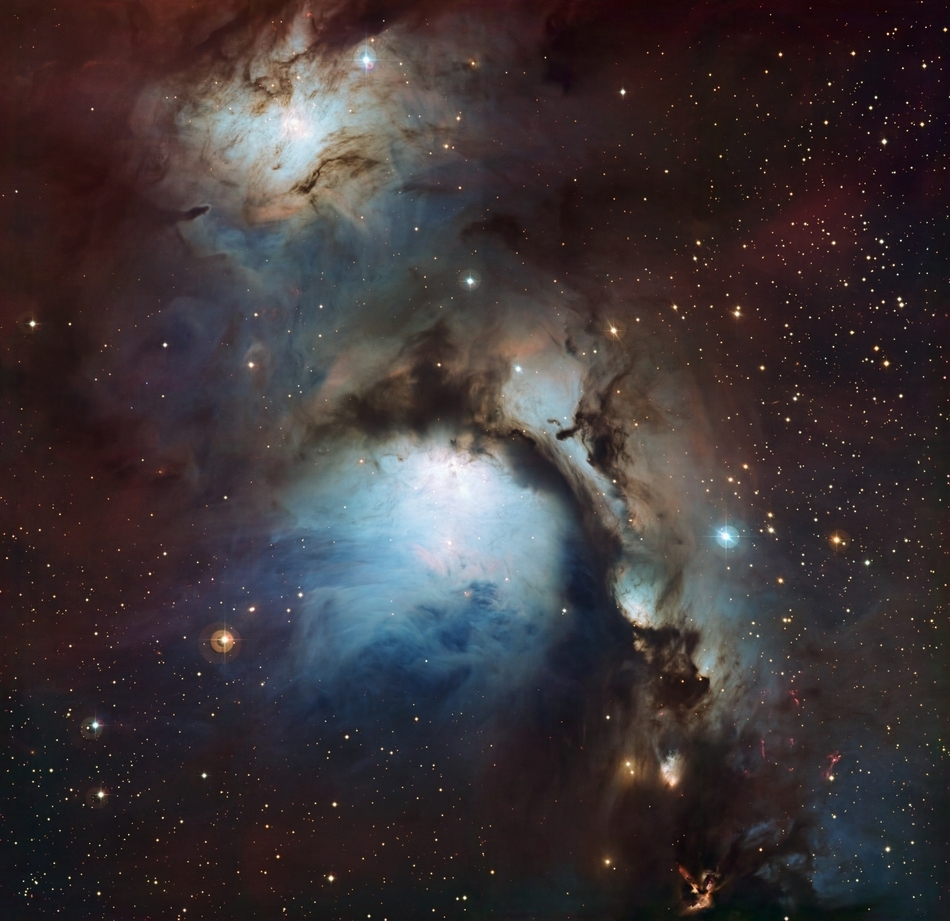M78, a nebula 1600 light years away in the constellation of Orion, is a beautiful example of a reflection nebula.
Whenever you have accumulations of gas in interstellar space this gas can mainly do one of three things. If the temperature of the gas is low enough it can simply block any light from behind it - Bernard 68 or the dark cloud in the Horsehead Nebula are good examples. Another option is that hot and bright stars in the vicinity ionize the gas. When the atoms’ electrons afterwards revert to their base state they emit photons with a characteristic red colour, hence they are also called emission nebula. Again the Horsehead Nebula is a good example, but in this case the red background nebula is an emission nebula.
On this image you can mainly see the third case, a reflection nebula: the gas reflects the radiation from bright stars. These stars emit a good part of their radiation in blue (see black body radiation). But there is a second reason why the nebula is so blue: dust or gas particles reflect blue light much better than they do red light. That's why this gas and dust is not observable in infrared light; infrared light just passes through the gas cloud. And that's also the reason why our sky is blue and not yellow like our Sun. The blue part of the sunlight is reflected in all directions whilst light with other wavelengths, such as red or yellow, is much less reflected.
If interested, read more about: Reflection nebula
